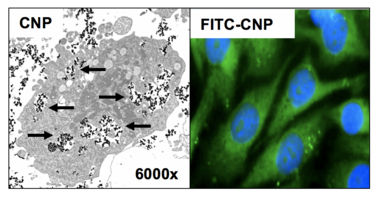Reactive oxygen species in health and disease
Our group aims to throw a light on the effect of mitochondria- or other endogenous/ exogenous derived reactive oxygen species (ROS, prooxidants) in physiological and pathophysiological processes of the cell, especially skin cells. An imbalance between prooxidants versus antioxidants towards higher concentrations of ROS, called oxidative stress, has been implicated in molecular mechanisms which result in cellular aging and in several pathological states, such as neurodegenerative diseases and carcinogenesis. Large efforts from a variety of research groups including ours are made both to clarify and to better understand the ROS dependent signal cascades and to identify signaling components which are redox-modulated. Aging and carcinogenesis share common features, however, they reveal unique molecular characteristics which finally determine the fate of the cell. For example, as invasion and metastatic spread of tumor cells continue to be the greatest barrier to cure cancer, the understanding of the ROS dependent cellular interaction between tumor cells and its surrounding stroma could assist in the development of novel therapeutic strategies to combat metastatic spread more efficiently in the future.
In that context, antioxidants and/or polymer-coated nanoparticles (<100 nm) (Fig. 1) seem to be a promising tool in prevention of tumor invasion and of (photo)aging processes. The potential role of cerium oxide nanoparticles (nanoceria, CNP) and others in modulation of the physiological and pathophysiological redox signaling will be studied in our research group (Fig. 2) by cell biological, biochemical and molecular biological techniques, using (3 dimensional) in-vitro and in-vivo models.
Fig. 1 : Cellular uptake of cerium oxide nanoparticles (CNP)
Squamous tumor cells of the skin were treated with 150 µM CNP or fluorescein isothiocyanate (FITC)-labeled CNP for 24 h. Data of studies with trans electron microscopy (left) indicate uptake of CNP (see arrows). Studies with FITC-CNP (green fluorescence) show distribution of CNP in the cytosol, while there appears no green fluorescence (or merged cyan fluorescence) of the nuclei (blue, DAPI-staining).
Fig. 2: Bifunctional role of cerium oxide nanoparticles (CNP) in tumor-stroma interaction
CNP prevent (-) tumor cell-derived growth factor (GF) dependent modulation of normal (stromal) cells (e.g. transdifferentation, neoangiogenesis) and mediate their protection from doxorubicin (DOX)-initiated apoptotic cell death. Furthermore, CNP lower tumor invasion and tumor growth in vivo. In contrast, CNP induce (+) the reactive oxygen species (ROS)-mediated cell death and enhances the apoptotic rate in a combinational approach with DOX (see literature).






